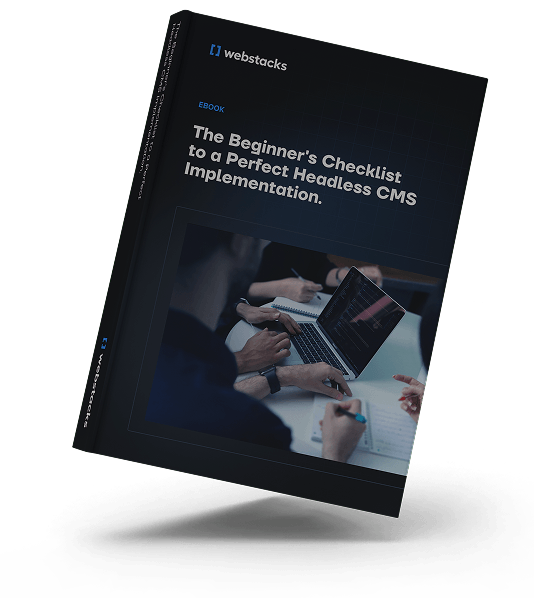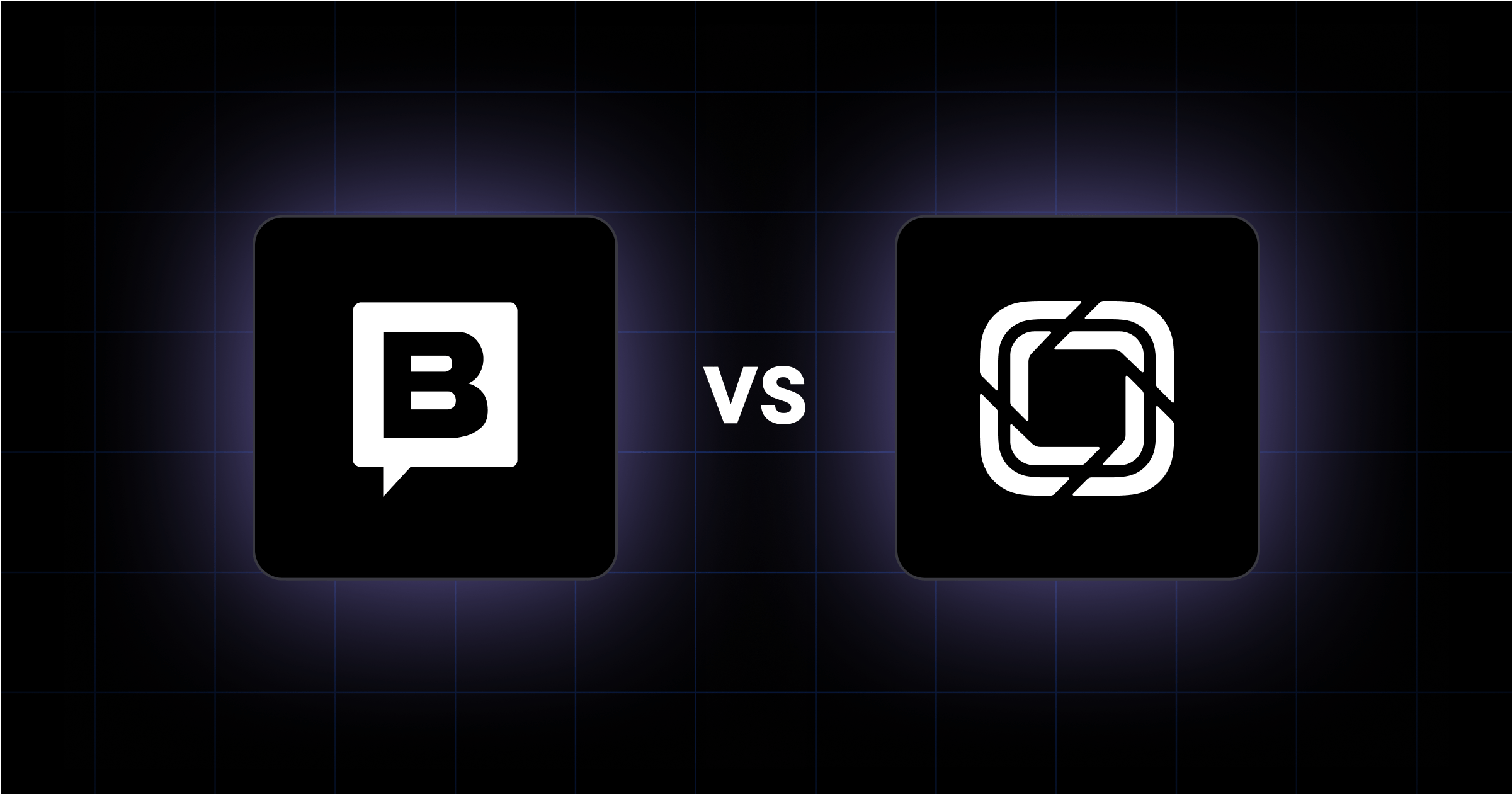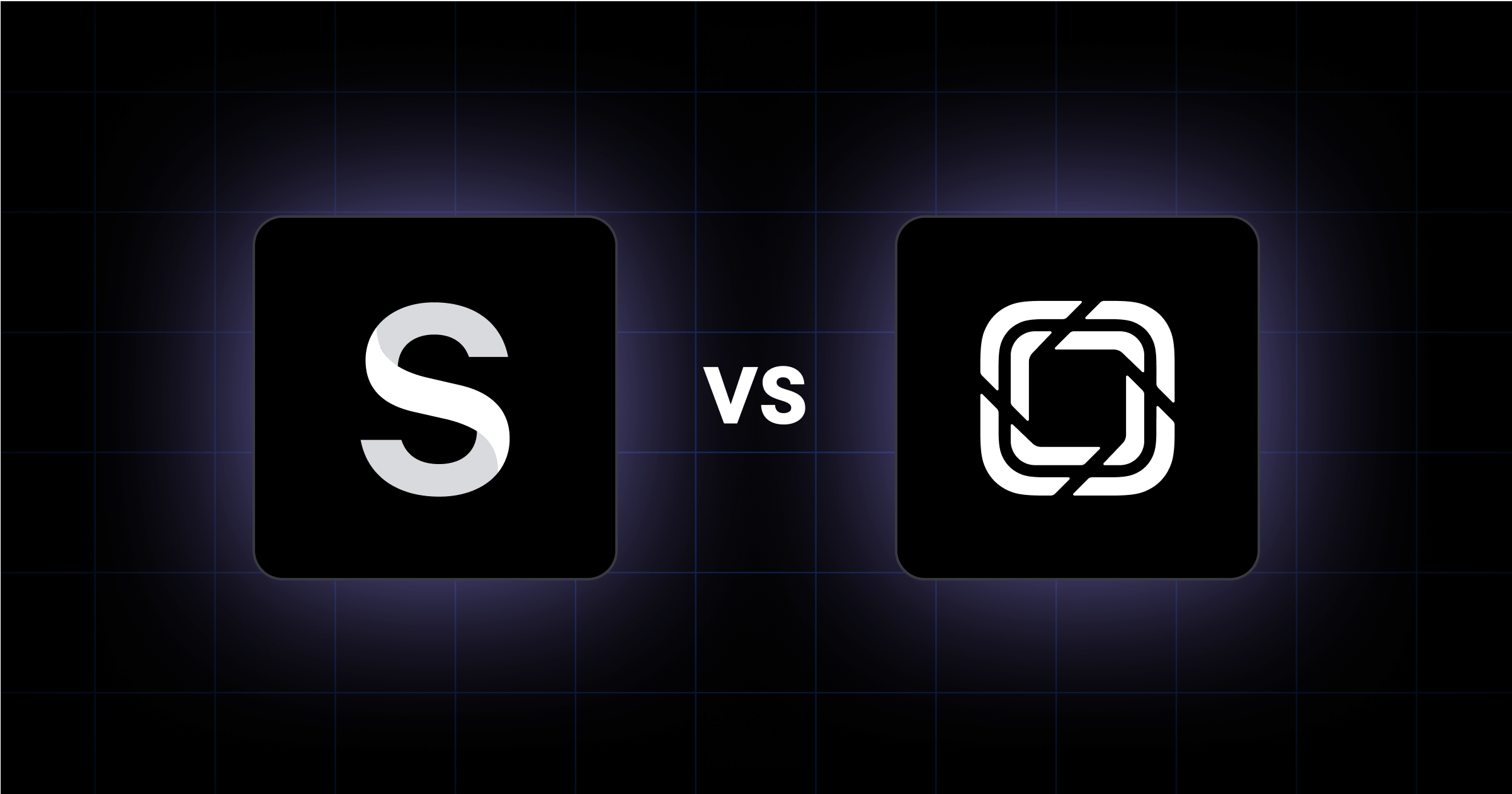For high-growth B2B companies, your CMS determines the speed at which your team can ship marketing campaigns and scale across regions.
As a digital partner to dozens of scaling companies, Webstacks has seen firsthand how the right CMS can remove bottlenecks and unlock serious growth. And in 2025, that means going headless and composable.
We believe composable websites and headless CMS platforms like Contentful and Contentstack are the future of B2B digital experiences. They give your team the flexibility to build exactly what you need and scale without being held back by monolithic legacy systems.
In this guide, we’ll compare Contentstack vs Contentful to help you figure out which platform is the better fit for your business.
A Quick Look at Contentful and Contentstack
Contentful and Contentstack might seem similar on the surface, but they offer different strengths when it comes to building a scalable website.
What is Contentful Best Known For?
Contentful is a headless CMS that helps teams manage and publish content more efficiently. This includes multiple pages, regions, and platforms. It’s popular with fast-growing marketing teams and product-driven companies that want a content system built to scale.
Here’s why B2B teams often choose Contentful:
- You can create structured content once and reuse it across different pages, products, or regions.
- It connects easily with other tools in your tech stack, such as web frameworks, apps, and analytics platforms.
- It’s built to support complex workflows, from multilingual content to role-based approvals.
- The app marketplace makes it easy to extend functionality with tools like personalization, SEO, or localization.
For growing SaaS companies and mid-market teams expanding globally, Contentful offers a good foundation for long-term content operations.
Learn more about the benefits of implementing Contentful in our Calendly customer story.
What is Contentstack Best Known For?
Contentstack is more than just a headless CMS. It’s a Digital Experience Platform (DXP), which means it brings together everything you need to manage and deliver content across websites, apps, and other digital channels.
A DXP is a set of connected tools that helps companies create and personalize digital experiences. It combines content management with things like analytics, localization, and user targeting to support consistent experiences across all touchpoints.
Here’s where Contentstack stands out:
- Built-in workflows help teams stay organized with content reviews, approvals, and publishing.
- Visual editing tools allow marketers to make updates without needing developer support.
- Localization and multisite support help brands manage content across regions and languages.
- It integrates with personalization tools, analytics platforms, and frontend frameworks to support more advanced use cases out of the box.
If your team is managing multiple sites, languages, or departments and needs a centralized platform to keep it all running smoothly, Contentstack’s enterprise-ready features could be the right fit.
When to Choose Contentstack vs Contentful
Whether you’re launching a campaign or coordinating across multiple regions, the right CMS should accelerate your workflows.
Here’s how Contentstack and Contentful stack up in common B2B scenarios.
If Speed to Market Is a Top Priority
Marketing teams facing tight deadlines often find Contentstack to be the faster option.
Its built-in workflows, visual editor, and automation tools let marketers publish content without relying heavily on developers. That level of autonomy can be a big advantage for lean teams that need to move quickly.
Contentful takes more time to set up but offers greater flexibility in the long run.
Once developers define the content model and connect it to your frontend, marketers can work efficiently within that structure. It’s a good choice for teams that already have engineering support or are working with a partner like Webstacks to get things up and running.
In our experience, Contentstack is a better fit for teams focused on short-term speed and campaign execution. Contentful is the stronger option for teams investing in a long-term, scalable foundation.
If Your Content Is Complex or Highly Structured
Contentful is the go-to choice for B2B companies managing large content systems such as product catalogs, resource libraries, or localized case studies.
It gives teams full control over content modeling, so it’s easy to create reusable components and define relationships between content types. That level of flexibility is ideal for managing global content from a single system.
Contentstack is slightly less flexible in content modeling. But it stands out when governance is a higher priority. Its built-in workflows and approval layers make it easier to manage content ownership across teams.
If your publishing process involves regulatory reviews, legal approvals, or multiple stakeholders, Contentstack may be a better fit from a workflow and accountability standpoint.
Both platforms can support complex content. The better choice depends on where the complexity appears. If it's in modeling and reusability, Contentful is your best bet. If it's in workflow management and cross-team collaboration, Contentstack is the better match.
If You’re Managing Multiple Sites or Languages
Localization and multisite management is a pain point for a lot of B2B organizations.
Contentstack makes this much easier. It’s built to handle multiple languages, microsites, and regions from a centralized dashboard. With baked-in localization tools and granular permissioning, it’s ideal for global content teams managing multiple variants of the same message.
Contentful also supports localization and versioning, but the experience is more developer-driven. It offers the flexibility to build out localization workflows tailored to your needs, but expect to rely on technical support or integrations to match what Contentstack offers out of the box.
If you’re looking for plug-and-play multisite management, Contentstack is the clear winner. But if you need a more customizable localization framework and have the dev resources to build it, Contentful can get the job done.
If Integration and Flexibility Matter Most
When it comes to integrations and extensibility, Contentful is tough to beat. It’s a truly API-first platform with a rich app marketplace, GraphQL and REST support, and interoperability with frontend frameworks such as Next.js and Nuxt.
Contentful gives you full control if you want to integrate tools for analytics, personalization, A/B testing, or translations.
Contentstack takes a different approach. Rather than giving you a blank slate, it comes pre-wired with a growing suite of DXP features. This makes it attractive for enterprise teams that want an out-of-the-box experience and fewer dependencies on engineering.
The bottom line: if you’re assembling a best-of-breed stack with deep customization, go with Contentful. If you want a more unified platform with less overhead, Contentstack is a better fit.
Still Exploring Other CMS Platforms?
Many B2B companies evaluating headless platforms are also considering other options.
Here are a few choices worth keeping in mind:
- Sanity: Great for dev-led teams who want full control over schema, content logic, and a highly customizable editorial interface.
- Prismic: Ideal for lean marketing teams who value fast setup, visual editing, and simplicity over deep structure.
- Storyblok: A strong hybrid solution that combines visual editing with structured content. It’s popular among global teams managing multilingual content.
- Builder.io: Designed for composable frontends, Builder.io gives marketers visual control while letting developers define performance-driven components.
If you’re migrating from a traditional CMS, we also recommend downloading our headless CMS implementation guide to help you prepare for the transition:

It’s also worth exploring our other CMS comparison guides:
The Right CMS Will Help You Scale Faster
By now, you’ve learned the differences between Contentful and Contentstack in how they support B2B teams. So how do you choose between the two?
Start by looking at how your team works today.
If your marketing org needs to move quickly, but you’re constantly bumping into development bottlenecks, Contentstack may give you the fastest return. It’s a smart pick for companies that need guardrails, workflows, and a turnkey publishing experience right out of the box.
On the other hand, if your business is scaling fast and already has engineering resources in place, Contentful will give you more long-term flexibility. It’s ideal for teams investing in modular content, composable architecture, complex content relationships, and optimizing website performance across global regions and digital touchpoints.
If you still feel like your use case falls in the middle, book a call with Webstacks to get strategic guidance.
But choosing a CMS is only the beginning. Whether you're replatforming or scaling globally, Webstacks can help you make it happen.




